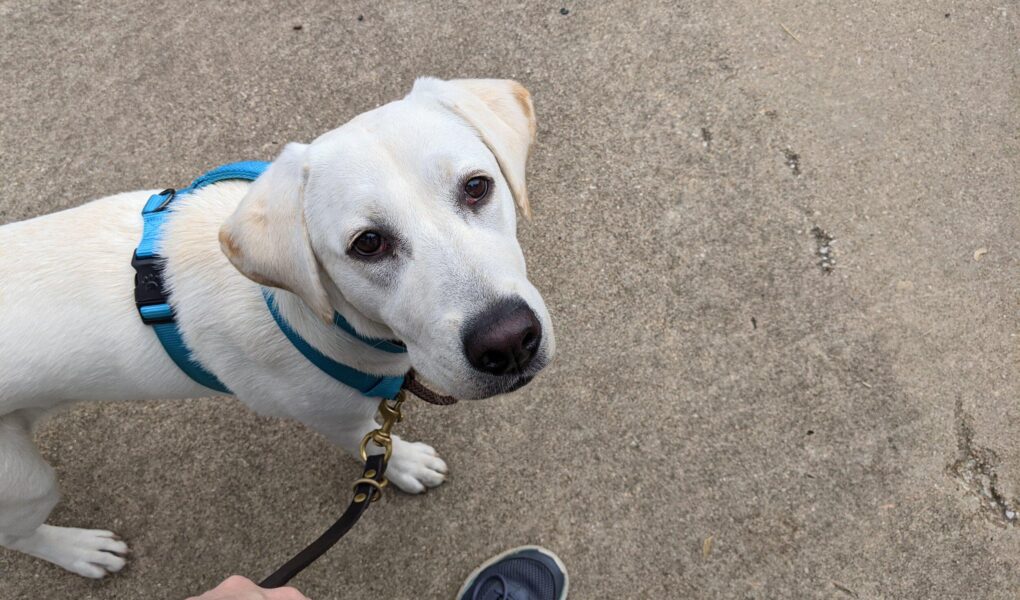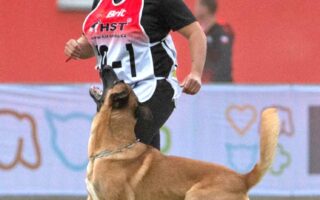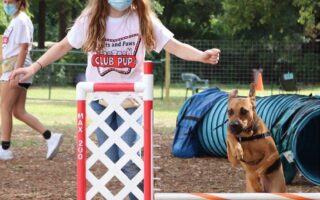Title: Unraveling the Tug-of-War: Addressing Dog Biting Leashes and Jumping Behaviors
Introduction:
In the enchanting world of canine companionship, few sights are as spirited as a dog leaping with exuberance, tethered only by a leash that seems to playfully resist its will. For many dog owners, this scene encapsulates the joy of having an enthusiastic pet—until that joyous display shifts from mere excitement to a tug-of-war struggle against a vile enemy: the leash. The biting and jumping behaviors that some dogs exhibit can be both endearing and perplexing, posing challenges that test the resolve of even the most seasoned pet parents. But what lies beneath this energetic exterior? Is it a manifestation of playful instinct, a reaction to confinement, or perhaps a habitual quirk? In this article, we will explore the reasons behind these behaviors, the impact they have on the leash-walking experience, and offer insights into fostering a more harmonious bond between you and your furry friend. Come along as we navigate the intricate dance of leash dynamics, spectrum of canine behavior, and effective techniques that can transform those spirited leaps into graceful walks.
Table of Contents
- Understanding the Root Causes of Leash Biting and Jumping in Dogs
- Practical Techniques to Curb Leash Biting Behavior
- Strategies to Manage Jumping: Building Calmness and Structure
- Training Tips for a Better Leash Walking Experience
- Q&A
- The Way Forward
Understanding the Root Causes of Leash Biting and Jumping in Dogs
When dogs engage in biting their leashes and jumping around, there are several underlying factors that contribute to this behavior. A common cause is excess energy. Many dogs, especially active breeds, require adequate physical and mental stimulation. Without it, they may resort to self-entertainment methods, such as nipping at their leash or leaping in excitement. Similarly, anxiety or fear can also play a role; dogs may bite at their leashes when feeling overwhelmed or scared during walks, using the behavior as a coping mechanism.
Another significant factor to consider is lack of training and impulse control. Dogs that have not been adequately socialized or trained may not understand the appropriate behavior while on a leash. These dogs might bite the leash as a way to express frustration or excitement, not knowing how else to channel their energy. Additionally, improper owner reactions can reinforce these behaviors. For instance, if a dog is rewarded with attention or treats when they jump and bite, it’s likely they will continue doing so, associating such behaviors with positive reinforcement. Understanding these causes is essential for addressing and managing leash biting and jumping effectively.
Practical Techniques to Curb Leash Biting Behavior
To help your furry friend overcome leash biting, it’s essential to redirect their energy positively. Start by incorporating frequent breaks during walks to allow your dog to explore their surroundings without the leash in their mouth. When they start to bite, halt your movement and use a firm “no.” As soon as they stop, reward them with praise or a treat. This teaches your dog that biting the leash will not result in fun but that good behavior will bring rewards. Pair this with engaging toys they can chew on as a substitute, which will keep their gnawing instincts satisfied.
Additionally, training exercises can reinforce proper leash manners. Try practicing the following techniques during walks or training sessions:
| Technique | Description |
|---|---|
| Redirection | Use a favorite toy to distract them from the leash. |
| Leash Training | Encourage walking without biting the leash using treats. |
| Cue Commands | Teach commands like “leave it” to reduce biting. |
Combining these methods with patience and consistent practice will cultivate a leash-friendly behavior, making walks enjoyable for both you and your dog. Remember, each dog learns at their own pace, so maintain a calm demeanor and celebrate incremental progress.
Strategies to Manage Jumping: Building Calmness and Structure
To transform your dog’s jumping behavior into a more controlled response, several effective strategies can be employed. Begin by establishing consistent rules and boundaries that your dog can understand. Implement practices such as:
- Engaging in regular training sessions to reinforce basic commands like “sit” and “stay.”
- Using a leash as a tool for guidance, helping your dog learn that jumping isn’t an option.
- Reinforcing calm behavior during moments of excitement with treats, praise, or toys.
Incorporating structured routines can also significantly reduce excitement-induced jumping. A well-defined daily schedule that includes:
- Set times for walks, playtime, and training.
- Planned relaxation moments, such as quiet time in a designated spot.
- Interactive play sessions that channel energy into appropriate activities.
By adopting these strategies, you can cultivate a calmer environment for your dog, fostering positive behavioral patterns and lessening the urge to jump or nip at the leash.
Training Tips for a Better Leash Walking Experience
To transform your dog’s tendency to bite the leash and jump during walks into a more enjoyable experience, focus on establishing solid groundwork with consistent training techniques. Here are some strategies that can help:
- Positive Reinforcement: Always reward good behavior with treats, praise, or playtime when your dog walks calmly on the leash.
- Frequent Breaks: If your dog becomes overexcited, take regular breaks to allow them to calm down. Use this time to practice sit or stay commands.
- Short Sessions: Keep walks short initially to prevent overwhelming your dog. Gradually increase the length as they improve.
- Leash Alternatives: Consider using a no-pull harness or a different style of leash that discourages pulling and jumping.
Incorporating engaging activities during walks can also divert your dog’s attention and reduce leash biting or jumping incidents. Try these fun distractions:
| Activity | Description |
|---|---|
| Sniff Breaks | Allow your dog to stop and sniff surroundings to explore their environment. |
| Toys on the Go | Bring a favorite toy to engage your dog and redirect their focus. |
| Obstacle Fun | Create simple obstacles for your dog to navigate, helping maintain focus. |
Q&A
Q&A: Understanding Dog Biting Leashes and Jumping Behavior
Q1: Why do dogs bite their leashes?
A1: Dogs may bite their leashes for several reasons, including excitement, boredom, or a desire to play. This behavior can also stem from frustration when they want to explore but feel restricted. Additionally, some dogs may perceive the leash as a toy, inviting them to tug and chew on it as a natural instinct.
Q2: Is leash biting a sign of aggression?
A2: Not necessarily. Leash biting is often more about playfulness and energy release than aggression. However, if your dog’s biting is accompanied by growling or other aggressive behaviors, it may signal underlying anxiety or frustration. In such cases, consulting a professional trainer or behaviorist can be beneficial.
Q3: How can I discourage my dog from biting the leash?
A3: Redirecting your dog’s energy is key! Use positive reinforcement to encourage alternative behaviors. For instance, bring a favorite toy on walks so your dog has something acceptable to chew on. Consistency is vital: if biting does occur, calmly stop walking and wait for your dog to settle before continuing.
Q4: What about jumping? Why do dogs jump on leashes?
A4: Jumping is often an expression of excitement or eagerness to greet other dogs or people. Puppies, in particular, might jump out of sheer joy! However, if it’s excessive, it can lead to unmanageable leashed outings. Understanding this behavior is the first step to addressing it effectively.
Q5: How can I manage my dog’s jumping behavior?
A5: Training is essential! Teach your dog an alternative behavior, like “sit” or “stay,” when approaching others. Reward them with treats and praise when they remain calm. Practicing sessions in a controlled environment can also help your dog learn to manage their enthusiasm on leash.
Q6: Are there specific breeds more prone to biting leashes or jumping?
A6: While any dog can exhibit these behaviors, high-energy breeds like Border Collies, Jack Russell Terriers, and Labrador Retrievers may show them more frequently due to their active nature. However, individual personality and past experiences play a significant role as well.
Q7: When should I seek professional help for my dog’s leash biting or jumping?
A7: If leash biting or jumping becomes severe, leads to injury, or causes frequent stress during walks, it’s time to consult a professional dog trainer or behaviorist. They can provide tailored strategies that are specific to your dog’s needs, helping to create a more enjoyable experience for both you and your furry friend.
Q8: Can leash biting and jumping improve with age?
A8: Often, with proper training and structured socialization, many dogs will learn to self-regulate their excitement and reduce biting and jumping over time. Consistent practice and positive reinforcement can lead to lasting behavioral improvements as your dog matures.
—
This Q&A aims to provide insights and solutions for dog owners facing leash biting and jumping issues, transforming potential challenges into opportunities for growth and bonding.
The Way Forward
As we conclude our exploration of the curious behaviors of dogs biting their leashes and leaping with exuberance, it’s clear that these actions are more than just playful antics—they’re expressions of a dog’s personality, energy, and instinctual drive. Understanding these behaviors provides us, as pet owners and enthusiasts, with valuable insights into our furry companions’ needs and desires. By recognizing the underlying motivations behind leash biting and jumping, we can foster a more harmonious bond with our pets, channeling their energy into healthy outlets. Whether it’s through training, enrichment, or simply enjoying interactive playtime, embracing their quirks can lead to a happier and more fulfilling relationship. So, the next time your dog sinks their teeth into that trusty leash or vaults into the air with infectious enthusiasm, remember: these moments are just another part of the joy that comes with being a dog owner. Let’s harness that energy together and celebrate the vibrant spirit that our four-legged friends bring into our lives.



